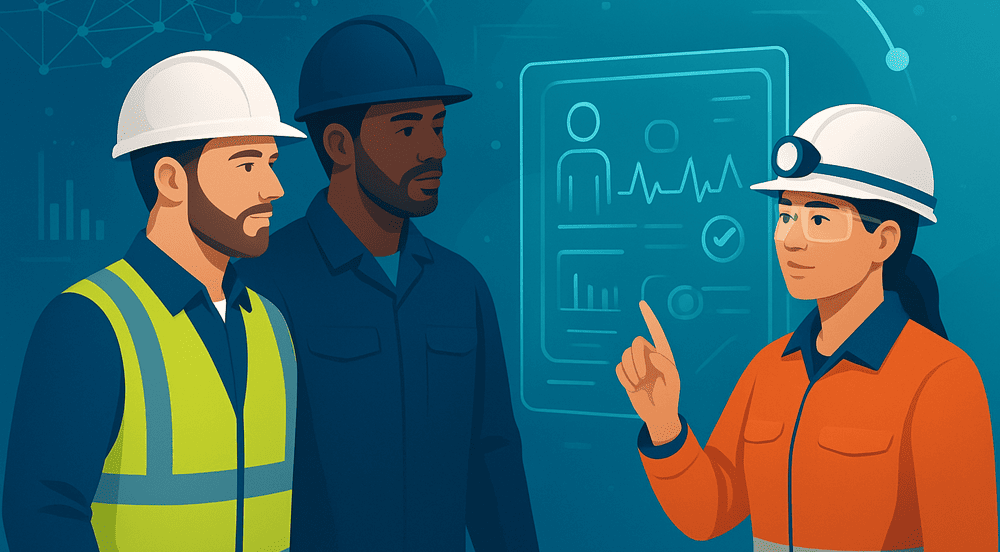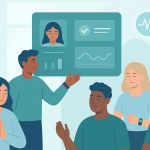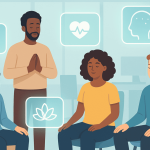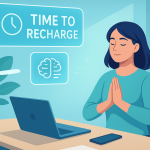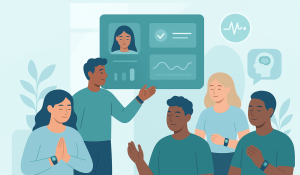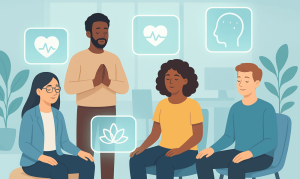Heavy industries like mining, construction, and oil & gas are the backbone of global infrastructure. But they’re also environments where mental and physical demands collide daily. The constant noise, safety risks, harsh conditions, and long shifts can take a toll on workers’ mental health. This is where Industrial Wellness AI is starting to change the game, bringing targeted, tech-driven support directly to the frontlines.
In this article, we’ll explore how AI solutions are not only monitoring and improving safety, but also addressing mental health in industries where stress, fatigue, and isolation are common.
Why Heavy Industry Needs Mental Health Innovation
Unlike office-based work, heavy industry jobs often take place in remote or hazardous environments. This brings a unique set of mental health challenges:
- Isolation and long shifts in mining camps or offshore rigs
- High-stress decision-making in construction projects with tight deadlines
- Exposure to dangerous conditions requiring constant focus
- Physical strain and fatigue that can increase mental burnout
Traditional wellness programs often fail here. Sending out an email about mindfulness or offering occasional counseling isn’t enough. Workers need real-time, contextual, and accessible support that fits their environment and that’s where AI for industrial wellbeing steps in.
How Industrial Wellness AI Works
Modern workplace wellness AI uses data and automation to make mental health support immediate and scalable. Instead of waiting for a monthly check-in, AI-powered tools can detect early signs of stress, fatigue, or anxiety in real time.
Core Features of Industrial Wellness AI
| Feature | Benefit in Heavy Industries |
| Biometric Monitoring | Tracks heart rate, stress levels, and fatigue via wearables |
| AI Safety and Wellbeing Alerts | Notifies supervisors if a worker is showing signs of distress |
| Real-Time Stress Support | Delivers short, guided relaxation or breathing exercises on-site |
| Predictive Analytics | Identifies patterns that could lead to burnout or accidents |
| Language & Accessibility Support | Ensures non-native speakers receive guidance in their language |
For example, mining mental health tools now integrate with helmet sensors to track worker stress and provide micro-break prompts when needed.
Applications Across Different Heavy Industries
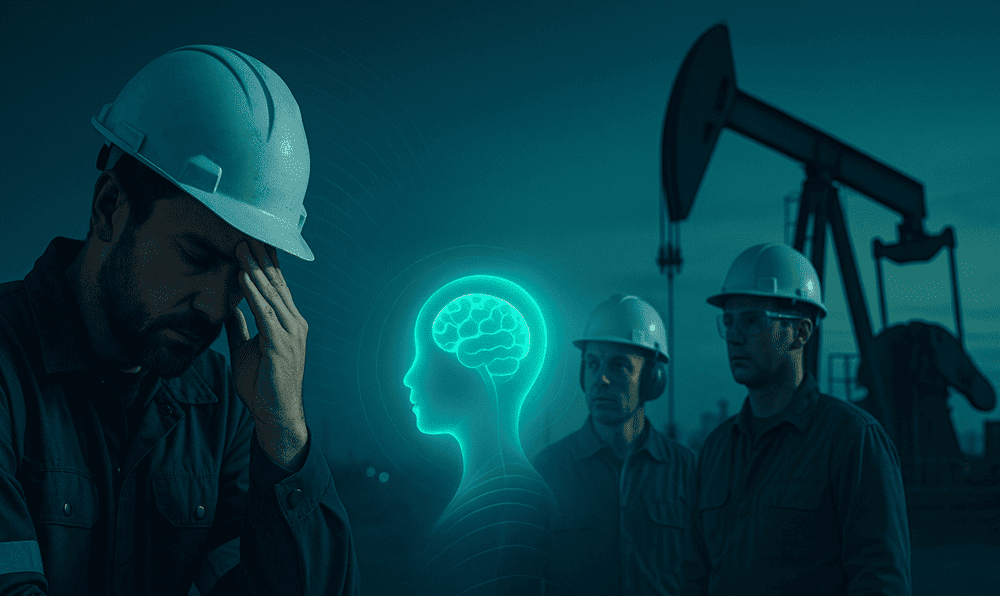
Mining: Remote Resilience
Working underground or in isolated locations can lead to feelings of disconnection and mental strain. Mining mental health tools can monitor physiological stress, suggest rest times, and connect workers to remote counselors when needed—no matter how far from a city they are.
Construction: Managing Pressure in Real Time
Deadlines, heavy machinery, and ever-changing project demands create a high-pressure environment. Construction mental health AI can detect if workers are physically overexerted or mentally fatigued and suggest immediate steps to reduce risk.
Oil & Gas: Safety + Mental Health Synergy
For offshore workers or those in high-risk drilling sites, AI for oil and gas worker wellness combines safety monitoring with psychological support. Real-time alerts can prevent accidents caused by distraction or mental fatigue.
The Role of AI in Workplace Mindfulness
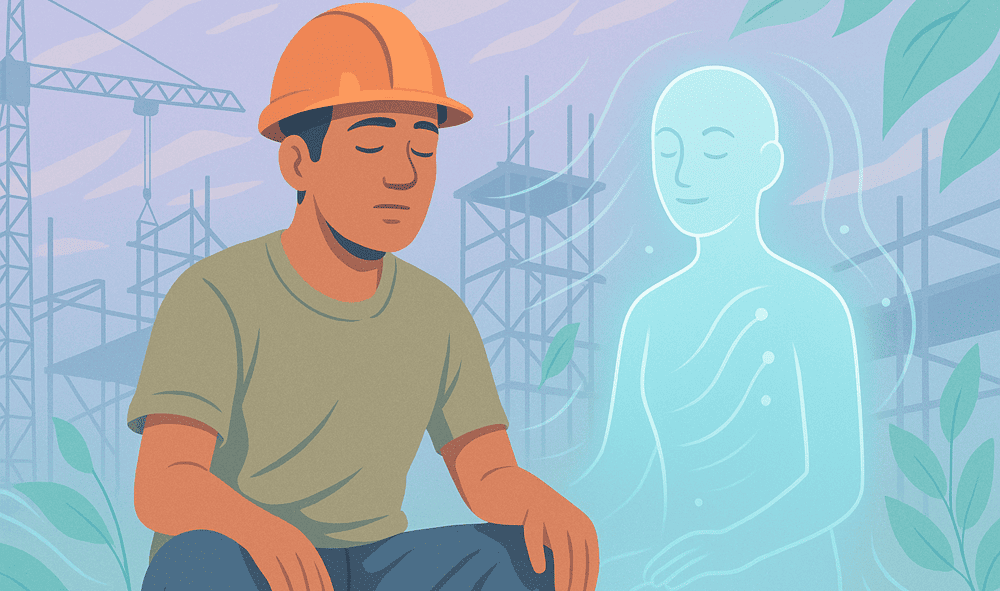
Frontline workers can’t always step away for a full meditation session, but AI mindfulness tools can deliver quick, personalized interventions:
- 3-minute guided breathing breaks between tasks
- Audio mindfulness exercises compatible with hearing protection gear
- Short focus-reset prompts triggered by biometric data
When used consistently, these small interventions can reduce cumulative stress and improve employee performance over time.
Why AI Works in High-Pressure Environments
AI wellness coach systems excel in heavy industries for three reasons:
- Speed: Interventions happen in seconds, not days.
- Relevance: Support is tied directly to the worker’s situation and current stress markers.
- Scalability: A single system can serve hundreds of workers across multiple sites.
Traditional programs often rely on self-reporting, but AI reduces the stigma and guesswork—making it easier for employees to receive help without feeling judged.
Addressing Social and Emotional Challenges
Many frontline workers experience anxiety, not just from the job itself, but from being away from family or working in close quarters with rotating teams. AI can help here, too.
For instance, AI for social anxiety can provide discreet, scenario-based communication tips before team briefings or safety meetings—helping workers feel more confident in group interactions.
Implementation Tips for Industrial Leaders
For industry leaders considering operational wellness solutions, here’s how to ensure a smooth rollout:
- Engage Workers Early – Introduce the system with transparency about how data will be used.
- Integrate with Safety Protocols – Make mental health part of the safety conversation, not separate from it.
- Train Supervisors – Give frontline leaders the skills to interpret AI alerts and take supportive action.
- Measure Impact – Track changes in accident rates, absenteeism, and reported stress over time.
- Customize for Industry Needs – Mining, construction, and oil & gas all require slightly different feature sets.
Real-World Impact: Case Snapshot
A major construction company piloted an AI safety and wellbeing system across three large-scale projects. Within six months, they reported:
- 22% fewer fatigue-related incidents
- 30% more voluntary mental health check-ins
- Faster response times when workers showed signs of distress
This was achieved without disrupting operations—because the interventions were built directly into the workday.
The Future of Industrial Wellness AI
As technology advances, AI for industrial wellbeing will become more intuitive, integrating with AR headsets, exoskeletons, and advanced safety gear. Soon, a worker’s protective helmet might also be their mental health coach—predicting stress and offering micro-interventions before problems escalate.
The goal isn’t to replace human empathy, but to extend it—ensuring no worker’s mental wellbeing is left behind in the push for productivity.
Final Thought
Industrial sectors thrive on precision, safety, and resilience. With Industrial Wellness AI, we can now add proactive mental health care to that list—protecting the people who keep our infrastructure running.

